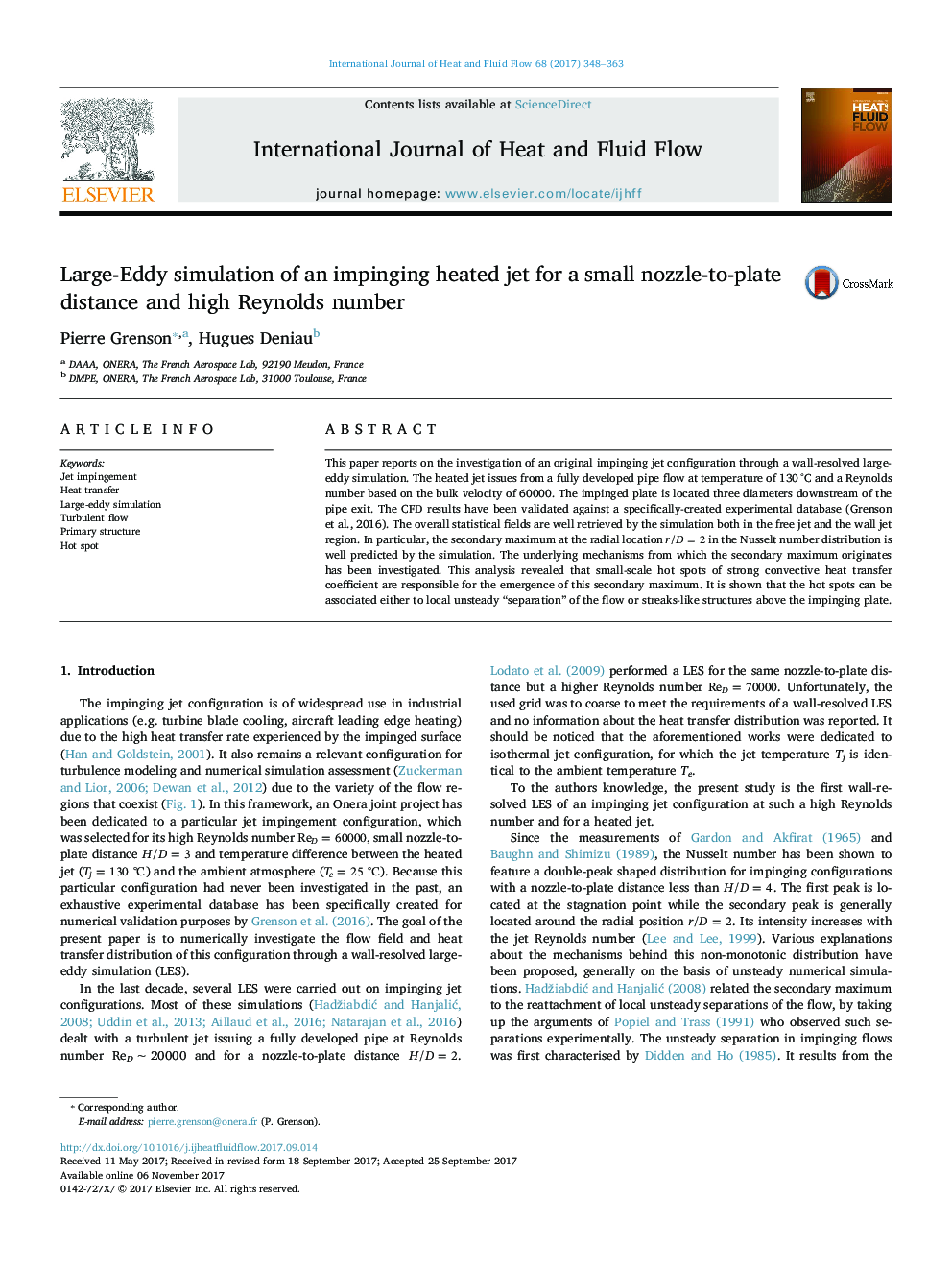| Article ID | Journal | Published Year | Pages | File Type |
|---|---|---|---|---|
| 7053556 | International Journal of Heat and Fluid Flow | 2017 | 16 Pages |
Abstract
This paper reports on the investigation of an original impinging jet configuration through a wall-resolved large-eddy simulation. The heated jet issues from a fully developed pipe flow at temperature of 130â°C and a Reynolds number based on the bulk velocity of 60000. The impinged plate is located three diameters downstream of the pipe exit. The CFD results have been validated against a specifically-created experimental database (Grenson et al., 2016). The overall statistical fields are well retrieved by the simulation both in the free jet and the wall jet region. In particular, the secondary maximum at the radial location r/D=2 in the Nusselt number distribution is well predicted by the simulation. The underlying mechanisms from which the secondary maximum originates has been investigated. This analysis revealed that small-scale hot spots of strong convective heat transfer coefficient are responsible for the emergence of this secondary maximum. It is shown that the hot spots can be associated either to local unsteady “separation” of the flow or streaks-like structures above the impinging plate.
Related Topics
Physical Sciences and Engineering
Chemical Engineering
Fluid Flow and Transfer Processes
Authors
Pierre Grenson, Hugues Deniau,
